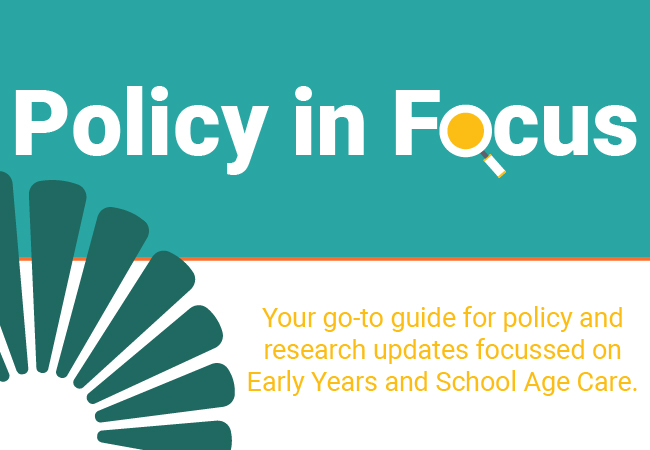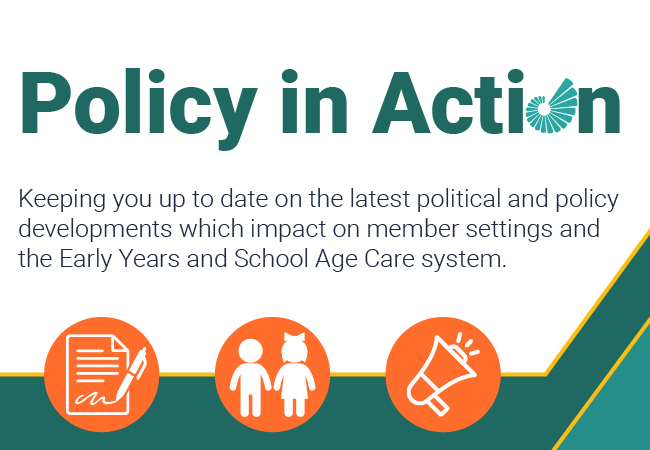Fairies fuelling imagination?

By Kathleen Tuite
Recently I have been struck by how interested young children appear to be in fairies. Is it the power of advertising or simply that children find fairies, fairy houses, fairy dust or all things fairy fascinating and intriguing?
My 4-year-old grandson is currently fascinated, he tells me about his conversations with fairies, how they have left fairy dust scattered outside the fairy house for him to see. He asks me questions about the fairies, what size are they, do they eat Rice Krispies for breakfast, do they like chocolate? The questions are endless. I don’t have all the answers, but I turn the questions back to him sometimes and say, ‘what do you think’? With his responses I find out what he knows and I am equally fascinated with his knowledge! I take the opportunity when talking to him to expand on some of his ideas and I might ask for example ‘what do you have for breakfast’, what kind of house do you live in’? Of course, I am mindful not to question too much, but to balance it with listening and acknowledging his thoughts and words. While I am primarily his Granny, with my background in early childhood studies, I do value play and how it contributes to children’s development and learning.
After all, Aistear tells us “Much of children’s early learning and development takes place through play and hands-on experiences. Through these, children explore social, physical and imaginary worlds. These experiences help them to manage their feelings, develop as thinkers and language users, develop socially, be creative and imaginative and lay the foundations for becoming effective communicators and learners.” (Principles and themes, 2009, p.11). And I know that encouraging children to use their imagination can support their acquisition of knowledge and show us what they currently know and understand.
Fuelling imagination and creativity
So, can all things ‘fairy’ fuel children’s imagination too? While I am not a big lover of the commercial aspect of fairies, I do believe that children’s imagination and creativity can be fuelled through play with fairies, just like play with most objects. We know from research how play with objects, pretence or socio-dramatic play has many benefits for children’s development. In fact, pretence/socio-dramatic play is also the most heavily researched area of children’s play. ‘High-quality pretend play has repeatedly been shown to be very closely associated with the development of cognitive, social and academic abilities. Studies have reported the impact of Playworld experience on narrative skills in five to seven-year-olds (Whitebread and Jameson, 2010), of pretence play on deductive reasoning and social competence, and of socio-dramatic play on improved ‘self-regulation’ among young children who are prone to be highly impulsive’ (Whitbread 2012).
Let us consider the possibility that fairies could be used as a provocation for play and as a medium to foster children’s imagination, then the possibilities might be endless! All we need to do is add curious adults who interact enthusiastically with the children. Who connect with children and provide play and hands on experiences and a learning environment which assists adults in tapping into children’s imagination, supporting them to be creative thinkers. Then children’s fascination with faries might feed their imaginations and support other areas of their development when these provocations are explored alongside children.
Building a child’s imagination at home
Here are some ways to build your child’s imagination at home or in an Early Years settings:
- Help your child to activate their imagination. Show your child that you value their imagination. Encourage them to use their imagination in play and talk with them about their thinking and ideas. If your child is younger, you might describe what you see and respond to their play (e.g. “Oh, you have made a mobile phone. Perhaps you are calling me. ‘Hello’.”).
- Ask thoughtful questions. This is about your child’s imagination, so let them lead thinking and play. However, asking thoughtful questions, now and then, can support creative thinking. Some educators, promote the use of “I wonder” questions that allow children to share their knowledge and ideas. For example, “I wonder what you are going to use to build the rocket”?, “I wonder what would happen if….?”. Be careful not to get carried away with the questions though. Creative thinkers need time to work things out for themselves.
- Make time for imaginative thinking and play. Life can get busy. Make sure that your child has plenty of free and unstructured time to think, explore and pursue their interests and ideas. There is evidence that playing outdoors and in nature stimulates imagination and learning. So too, some quiet time alone can help children to plan and work through an idea.
- Encourage different experiences. Read and tell imaginative stories, listen to a wide range of music, visit the museum, art gallery or botanical gardens. There are lots of no and low-cost ways that you can stimulate your child’s imagination and creative thinking.
- Show your playful side and imagination. As adults, we can become focused on what needs to be done at home or work. We can also be a bit self-conscious and find it hard to really get into imaginative play. However, showing your curiosity, imagination and creative thinking will encourage your child to do the same. Extracts from https://www.firstfiveyears.org.au/early-learning/tips-for-building-a-childs-imagination
References:
National Council for Curriculum and Assessment (2009) Aistear; the Early Childhood Curriculum Framework. Dublin: Government Publications.
Whitbread, D., (2012) The importance of play, A report on the value of children’s play with a series of policy recommendations. Cambridge University https://www.waldorf-resources.org/fileadmin/files/pictures/Early_Childhood/dr_david_whitebread_-_the_importance_of_play.pdf









